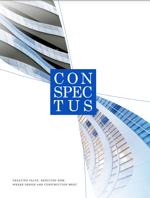The Risks to Design Intent
Architects bear the prime responsibility for delivering an optimal designed solution supported by high quality construction documentation. When forced by expedience or economics to make design decisions based on inadequate data or to provide documentation out of sequence, the results can trigger problems that extend across the entire project continuum and linger long after.
One of the most onerous of the consequences is reactive value engineering (VE) driven by construction costs and budget constraints. VE can occur almost anytime during each design phase. When it does, design teams often face the dilemma of whether to continue to work in the owner’s best interest or to preserve the design. All too often, value engineering efforts compromise the design intent, alter project scope, and significantly disrupt schedules. Obviously, VE also requires the architect to expend more time and resources, which can seriously erode efficiency, productivity, and profit margin.






